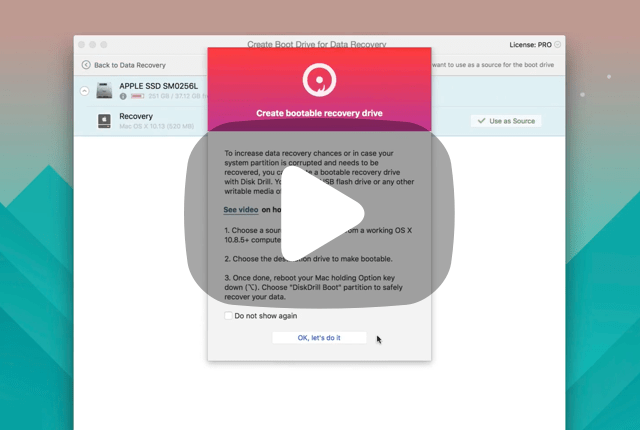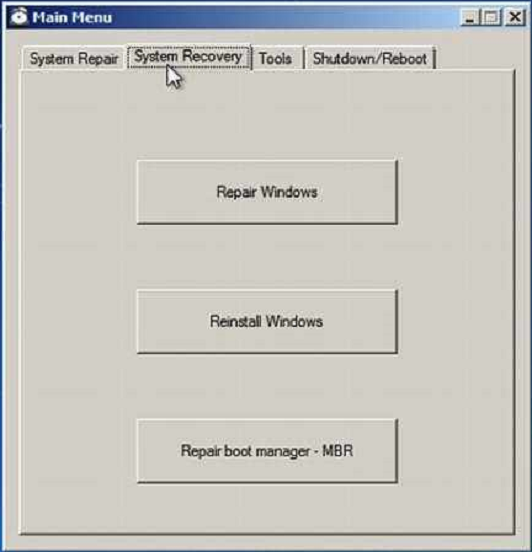How to create recovery partition for a previous version of MacOS? I installed Catalina as dev beta and as you might have guessed, the recovery partition is now based on Catalina. However, I'd like to recreate a Mojave partition. How do I add the recovery partition to Catalina 10.15.1? I searched everywhere, and I can’t find a way to do this. I just wiped my drive, re-partitioned it - the volume is the entire disk - and installed fresh from USB drive.
At a glance
Cons
Our Verdict
One of the best features introduced in Lion (OS X 10.7), and available on every version of OS X since, is OS X Recovery. The OS X installer creates an invisible, bootable, 650MB partition—a portion of a drive that the operating system treats as a separate volume—on your startup drive called Recovery HD that includes a few essential utilities for fixing problems, restoring files, browsing the Web, and even reinstalling OS X.
The Lion, Mountain Lion, and Mavericks installers should automatically create the invisible Recovery HD partition the first time you install one of these operating systems. Instagram 10.6.8. However, that doesn’t always happen. You can find out if your Mac has the Recovery HD partition—and, thus, OS X Recovery capabilities—by launching the Terminal app (in /Applications/Utilities), and then typing diskutil list and pressing Return. Locate your Mac’s startup drive in the resulting list of volumes; if you have a Recovery HD partition, it will show up as “Recovery HD” (preceded by “Apple_Boot”) just below the name of the startup drive. If you don’t see a Recovery HD partition on your Mac’s startup drive, you can’t use OS X Recovery.
The heirs english. (Another situation where you may need to add a Recovery HD partition is when you have an external drive you use for clone backups and you want to enable FileVault on it—a drive must have a Recovery HD partition to use FileVault.)
If you don’t have a Recovery HD partition, Apple’s official procedure for adding one is to back up your drive, erase it to make sure it’s properly formatted, reinstall OS X—which should create the hidden partition—and then restore your data.
But an easier approach is to use the free Recovery Partition Creator (more info here). This app can create the partition and even install the necessary OS X Recovery software on it. You just need to have a copy of your OS X installer—Mavericks, Mountain Lion, or Lion—on a connected drive.
Warning: Recovery Partition Creator alters your drive’s partition map, which isn’t a trivial action.Beforeusing the utility, youmustback up your drive (and test your backup). I didn’t experience any data issues when testing Recovery Partition Creator, but whenever you use a utility that works with your drive at such a low level, you want to be safe.
Launch Recovery Partition Creator, read the disclaimer (which also reminds you to back up your drive—you did, right?), and click OK. You’ll then see a dialog box indicating the version of OS X installed on your Mac. Assuming it’s some version of 10.7, 10.8, or 10.9, you’ll see the message “continuing”; click OK. Next you’ll be prompted to choose the connected volume on which you want to create the recovery partition—presumably, this would be your startup drive, but you can also use Recovery Partition Creator to create the partition on a different drive. Choose the drive and click OK.
Conceptual chemistry pdf. Recovery Partition Creator will next check your drive for errors. You can skip this step, but I recommend letting it continue—you don’t want a utility mucking with your drive’s partition map if the drive or its directory is having problems.
You’ll then be asked to locate your OS X installer. Because Recovery Partition Creator will use the chosen installer to populate the new partition with the necessary OS X Recovery software, you’ll want to choose the installer for the version of OS X you’re running on your Mac. In other words, if your Mac is running Mavericks, you want to choose the Mavericks installer. Oddly, even though you’ve just chosen the installer, you’re asked to choose the OS version you’re going to install on the recovery partition. Click the correct version (10.7 or 10.8 is one choice, 10.9 is the other), and Recovery Partition Creator will begin repartitioning the drive and installing the necessary software.
Recovery Partition Creator Catalina Mac
The description here makes Recovery Partition Creator seem more complicated than it actually is. In practice, the steps are quick and mostly straightforward. However, the utility is an AppleScript-based app, which means you don’t get much feedback about what’s happening. Eventually—after a minute or so, or a few minutes, depending on the speed of your drive(s)—you’ll see an alert that the procedure was successful. (If you switched to another app to work while Recovery Partition Creator was doing its thing, this alert may be hidden behind other windows.) You can then quit the utility.
If you want to verify that Recovery Partition Creator did what it promised, you can open Terminal and repeat the diskutil list command. The drive in question should now show a Recovery HD partition.
I’ve tested Recovery Partition Creator on a number of drives—for example, my iMac, which somehow never got one despite many OS X installations, and a couple backup drives for which I wanted to enable FileVault—and it’s worked well. It’s a handy tool to have around.

Want to stay up to date with the latest Gems? You can follow Mac Gems on Twitter or on App.net. You can also subscribe to the Mac Gems RSS feed.
Restoring from a Time Machine backup - at least for me - won’t furnish youwith a Recovery partition. This is bad news because the only official wayof getting a recovery partition is to reinstall macOS. This seems a littlecounter-intuitive because isn’t the point of backing up your computer so youdon’t have to reinstall your OS? Anyway, let’s get to creating yourrecovery partition without a reinstall or without 3rd party tools. It’seasier than you think!
Note that this process worked for me on macOS Sierra (10.12). I give nowarranties that this will work for you so backup first.
Background
Recovery Partition Creator Catalina Full
As you probably already know, macOS won’t help create a recovery partition foryou and your OS will complain in these various ways:
- iCloud Find my Mac can’t be enabled
- FileVault (disk encryption) can’t be enabled

There’s a lot of info on the web about how to potentially resolve this,along with a number of 3rd party tools — and none of them worked for me. Thefirst one that was suggested was Carbon Copy Cloner and this won’t workbecause all it does it clone a Recovery HD, which means you actually need apartition to start with. I was also under the impression that would help youcreate one as well, but this isn’t possible on your boot disk. Finally,even when trying CCC from another Mac (and pointing it at my Macbook in TargetDisk Mode), it wouldn’t work either — though I can’t recall the specificreason. So CCC is out.
Next, there’s the suggestion of Recovery Partition Creator 4.x from Christopher Silvertooth.This AppleScript-based tool looks like it used to worked back in the day (10.9era) but it fails on Sierra; getting part way through and hanging. So, thisis out too. The script is saved as read-only so the raw source isn’tavailable but looking at what it does call (dmtestensureRecoveryPartition) lead me to a fully workable solution.
Solution
Firstly, you’ll either need two Mac computers or the ability to boot yourcomputer off an external drive because the recovery partition creatordmtest can’t write to your boot drive. The latter is easy if you’ve got aspare cable for Target Disk Mode (hold down T as your computer starts up).If so, connect it to the second Mac, and start the machine you want a Recoverypartition on in Target Disk Mode.
Otherwise, if you can boot a second disk (USB etc) connected to your targetcomputer, then just do so. I had a spare Mac on hand so that was much fasterand easier than installing macOS onto a USB.
After your second Mac/macOS install can see the disk you want to install arecovery partition onto (use either Disk Utility or diskutil list to checkits presence), do this:
Run this in a terminal after you have downloaded Sierra, or your OS, from theApp Store. Adjust the TARGET and MACOS_INSTALLER paths accordingly.
Essentially, we download the latest (easily) accessible Recovery drive .dmgwith dmtest in it, the utility that’s going to help us create the Recoverypartition, and then mount/use the .dmg inside the macOS installer to get thework done. Don’t mind that the dmtest is from Lion; it works just finewith Sierra. This won’t take long to run and the debugging messages in yourterminal tell you what percentage complete the process is.
Feel free to adapt this to your own paths or for different versions of macOS.
On the off-chance (read: very likely possibility) that Apple removes the LionRecovery HD installer, you can use the backup copy of dmtest that I’ve gotstored here. Note again that this file was from Lion and may or may not workwith any future macOS after 10.12.
Go Top